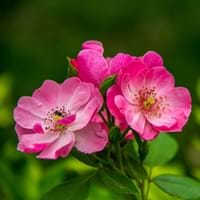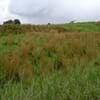Life Span
Perennial
Perennial
Type
Grass
Flowering Plants
Origin
United States, Northeastern United States, Mid-Atlantic United States, Southeastern United States, North-Central United States, Central United States, South-Central United States, Texas
Europe, India, Northwestern Africa, United States, Western Asia
Types
Virginia water horehound
Not Available
Habitat
Along Railroads, Barren waste areas, Hill prairies, Mined land, Pastures, Roadsides, Rocky glades, Sandy areas, Upland, Upland clay prairies, Upland sand prairies, Upland sandy savannas, Upland savannas, Upland soils
disturbed sites, Roadsides, stream banks, Woods
USDA Hardiness Zone
5-8
Not Available
AHS Heat Zone
9 - 1
Not Available
Sunset Zone
Not Available
Not Available
Habit
Clump-Forming
Upright/Erect
Flower Color
Not Available
Lavender, Light Pink, Pink, Purple, White
Flower Color Modifier
Bicolor
Bicolor
Fruit Color
Not Available
Non Fruiting Plant
Leaf Color in Spring
Green
Green, Gray Green, Dark Green
Leaf Color in Summer
Light Green
Green
Leaf Color in Fall
Orange, Tan, Brown
Green, Gray Green, Dark Green
Leaf Color in Winter
Tan, Sandy Brown
Green, Dark Green
Leaf Shape
Grass like
Pinnate
Plant Season
Summer, Fall, Winter
Spring, Summer
Sunlight
Full Sun, Partial Sun, Partial shade
Partial shade, Partial Sun
Type of Soil
Loam, Sand
Clay, Loam
The pH of Soil
Acidic, Neutral, Alkaline
Alkaline
Soil Drainage
Well drained
Well drained
Bloom Time
Early Fall, Fall
Spring, Summer
Tolerances
Pollution, Drought
Wet Site
Where to Plant?
Ground
Container, Ground, Pot
How to Plant?
Divison, Root Division, Seedlings
Seedlings, Stem Planting
Plant Maintenance
Medium
Medium
Watering Requirements
Average Water Needs, Medium
Keep the ground moist but not water-logged
In Summer
Lots of watering
Lots of watering
In Spring
Moderate
Moderate
In Winter
Average Water
Average Water
Soil pH
Acidic, Neutral, Alkaline
Alkaline
Soil Type
Loam, Sand
Clay, Loam
Soil Drainage Capacity
Well drained
Well drained
Sun Exposure
Full Sun, Partial Sun, Partial shade
Partial shade, Partial Sun
Pruning
Remove damaged leaves, Remove dead branches, Remove dead leaves
cut main flower spike, Remove dead branches, Remove dead or diseased plant parts
Fertilizers
All-Purpose Liquid Fertilizer
Apply 10-10-10 amount, as it is a flowering plant, use high phosphorous content fertilizer
Pests and Diseases
Red blotch
Grasshoppers
Plant Tolerance
Drought
Drought, Wet Site
Flowers
Insignificant
Yes
Flower Petal Number
Single
Single
Foliage Texture
Fine
Medium
Foliage Sheen
Matte
Matte
Attracts
Birds, Butterflies
Birds, Small mammals
Allergy
Pollen
Constipation, Diarrhea, Headache, Heartburn, Nausea, Pain and fatigue, Stomach pain, Vomiting
Aesthetic Uses
Not Used For Aesthetic Purpose
Bonsai, Bouquets, Cottage Garden, Showy Purposes
Beauty Benefits
Not Available
Good for skin, Skin Problems
Edible Uses
Insignificant
Yes
Environmental Uses
Air purification, Food for birds, Wildlife
Air purification, Food for birds
Medicinal Uses
Back pain, Diarrhea, Frostbite, Itching, Piles, Sore Eyes, Sore throat
Astringent, Diuretic, Laxative, Vitamin C
Part of Plant Used
Root, Seeds, Stem
Flowers, Rose Hip
Other Uses
Cattle Fodder, Used As Food, Used as Ornamental plant
Making Perfumes, Used as Ornamental plant, Used for its medicinal properties
Used As Indoor Plant
No
Yes
Used As Outdoor Plant
Yes
Yes
Garden Design
Dried Flower/Everlasting, Wildflower
Feature Plant, Mixed Border
Botanical Name
ANDROPOGON virginicus
Rosa Arkansana
Common Name
Broomsedge, Broomsedge Bluestem
Prairie Rose, Wild Prairie Rose
In Hindi
Broomsedge grass
Rosa arkansana
In German
broomsedge Gras
Rosa arkansana
In French
broomsedge herbe
Rosa arkansana
In Spanish
hierba Broomsedge
Rosa arkansana
In Greek
Broomsedge γρασίδι
Rosa arkansana
In Portuguese
Broomsedge grama
Rosa arkansana
In Polish
Broomsedge trawy
Rosa arkansana
In Latin
Broomsedge herba
Rosa arkansana
Phylum
Magnoliophyta
Magnoliophyta
Class
Liliopsida
Magnoliopsida
Clade
Angiosperms, Commelinids, Monocots
Angiosperms, Eudicots, Rosids
Tribe
Andropogoneae
Not Available
Subfamily
Panicoideae
Not Available
Number of Species
Not Available
Not Available
Season and Care of Broomsedge and Prairie Wild Rose
Season and care of Broomsedge and Prairie Wild Rose is important to know. While considering everything about Broomsedge and Prairie Wild Rose Care, growing season is an essential factor. Broomsedge season is Summer, Fall and Winter and Prairie Wild Rose season is Summer, Fall and Winter. The type of soil for Broomsedge is Loam, Sand and for Prairie Wild Rose is Clay, Loam while the PH of soil for Broomsedge is Acidic, Neutral, Alkaline and for Prairie Wild Rose is Alkaline.
Broomsedge and Prairie Wild Rose Physical Information
Broomsedge and Prairie Wild Rose physical information is very important for comparison. Broomsedge height is 60.96 cm and width 30.48 cm whereas Prairie Wild Rose height is 300.00 cm and width 200.00 cm. The color specification of Broomsedge and Prairie Wild Rose are as follows:
Broomsedge flower color: Not Available
Broomsedge leaf color: Green
Prairie Wild Rose flower color: Lavender, Light Pink, Pink, Purple and White
- Prairie Wild Rose leaf color: Green, Gray Green and Dark Green
Care of Broomsedge and Prairie Wild Rose
Care of Broomsedge and Prairie Wild Rose include pruning, fertilizers, watering etc. Broomsedge pruning is done Remove damaged leaves, Remove dead branches and Remove dead leaves and Prairie Wild Rose pruning is done cut main flower spike, Remove dead branches and Remove dead or diseased plant parts. In summer Broomsedge needs Lots of watering and in winter, it needs Average Water. Whereas, in summer Prairie Wild Rose needs Lots of watering and in winter, it needs Average Water.





